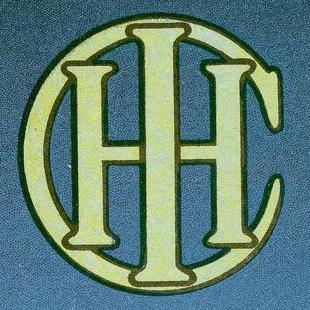 International Harvester Co
International Harvester Co. was formed Aug. 12, 1902, when McCormick Harvesting Machine Co., Deering Harvester Co., Plano Harvester Co., Milwaukee Harvester Co. and Warder, Bushnell & Glessner Co. merged. In the marketing of farm implements
International Harvester Co. retained the
Deering and
McCormick Deering brands for many years.
This grain drill was likely marketed under the Deering, or McCormick Deering, brand by International Harvester, who produced this wooden boxed grain drill early in the 20th century. There once was probably the word
DEERING stenciled across the front of the grain box, which has long ago faded away.
While drills with an additional fertilizer box were somewhat common by the time this unit was produced, this example doesn't have that option. On the cast iron box ends is embossed the wording "
Force Feed Grain Drill" with the part number,
F688 above and the IHC logo in the centre. This unit has no press wheels at the rear of the unit, another common option, or addition, in use by the time this unit was produced.
The Development of the Grain Drill
In 1851, a force-feed mechanism was developed to accurately meter the quantity of seeds, and in 1857, disc furrow openers, as well as chains or press wheels to cover the seeds, appeared. By the mid-1870s, grain drills that placed the seed into the ground at a uniform interval and depth, while covering the seed with an even layer of soil, were in common use on American farms.
Grain drills use a force-feed mechanism to meter the right amount of seed from the hopper and to drop it into the seed tube. These force-feed mechanisms were known as the double-run feed and the fluted feed, both of which were offered for many years by most drill manufacturers. The lower end of each seed tube terminates in a hoe, shoe or disc-type furrow opener that makes a furrow in the soil into which the seeds are dropped.
Each opener is held down by a spring that allows the opener to rise over obstructions without damage. Hand levers or cranks set the depth to which the openers penetrate. To cover the seeds, most furrow openers were equipped with a short chain with three large links that dragged behind pulling loose soil into the furrow and smoothing it over the seeds.
From Farm Collector
Kettle River Museum
The first railway to arrive in the area was the Columbia & Western, a subsidiary of the CPR. It was an extension of the CPR's line at Castlegar, intended to eventually link to the main line which ran to the coast. This link, known as the Kettle Valley Railway, was finished, finally, in 1915, linking the interior with the coast. The KVR ran from this point 600 km. west to meet the main line at Hope, BC. Built through rugged, mountainous terrain, it was hailed as an engineering landmark when completed.
The line remained in operation until, due to a changing economic climate, the KVR was abandoned and the tracks removed, beginning in 1991. Fortunately for us history buffs, a few far sighted individuals have managed to rescue this station for posterity.
As well as the station, the museum includes a main building housing smaller historical artifacts and interpretive displays of rail, mining, forestry, and agriculture heritage, an artifacts yard with larger artifacts, a caboose, a section house, a 6 bedroom bunkhouse (newly renovated and available to rent for hikers, cyclists and others) and a machine shed, which houses a plethora of mining, railroading and agricultural machinery. In this building is an old Austin Fire Truck, as well. The museum also has a picnic area shaded by a century old maple tree, grown from a seed planted by the wife of the station master.
The Kettle River Museum opened July 12, 1977 in a smaller building within the Village of Midway. That building housed many, or most, of the artifacts and displays to be found in the present main museum building. Some time after 1985 the museum was relocated to this spot to take advantage of the presence of the turn of the century heritage railway station.